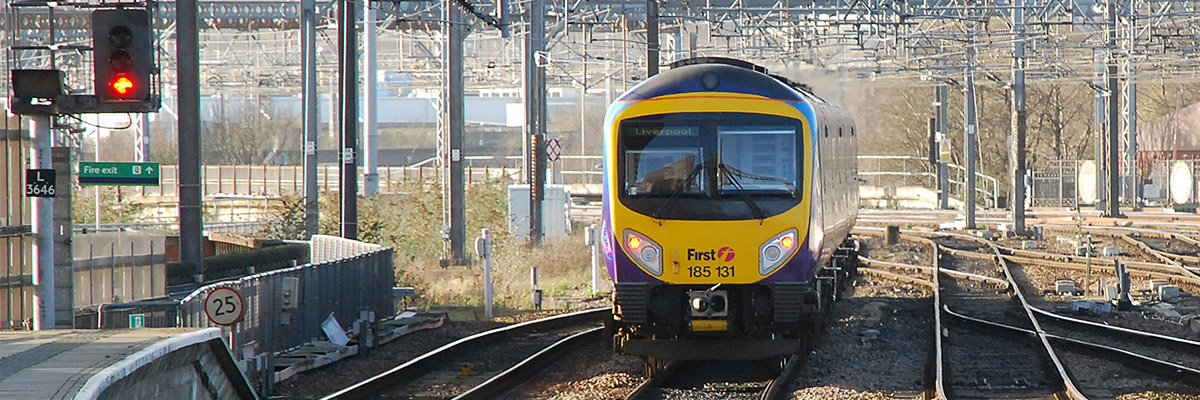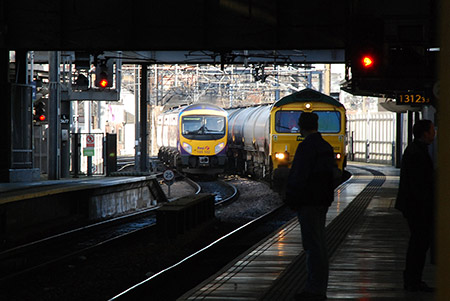New Uni software means reduced hazards at red railway signals

Wed, 07 Jun 2017 15:11:00 BST
Devised by researchers in the Institute of Railway Research the new software has been achieved by a ‘Big Data’ approach and will vastly reduce the risk of trains passing red signals
 TRAINS passing red signals present an ongoing hazard to railway safety. Now, researchers at the University of Huddersfield have created a new software tool that can help rail operators ensure that the likelihood of incidents known as SPADS – Signals Passed at Danger – are vastly reduced.
TRAINS passing red signals present an ongoing hazard to railway safety. Now, researchers at the University of Huddersfield have created a new software tool that can help rail operators ensure that the likelihood of incidents known as SPADS – Signals Passed at Danger – are vastly reduced.
It has been achieved by a ‘Big Data’ approach, involving the analysis of live feeds from the UK network recording more than a hundred million incidences of trains approaching signals. This has enabled Yunshi Zhao (pictured right) and Julian Stow (pictured right) of the University’s Institute of Railway Research, in partnership with rail industry body RSSB, to develop an algorithm that for the first time provides an incontrovertibly accurate figure for the number of occasions on which the signals are at red, meaning the driver must stop.
In itself, this is important data for understanding the overall likelihood of SPADS and working to prevent them. But the new tool – which has been named RAATS (Red Aspect Approach to Signals) – is also of huge value because further development will mean that rail companies can focus on individual signals and the number of occasions on which they have been red when been approached by a train.
This will have implications for driver training over specific routes and will also be valuable data for timetable planning and other strategic issues, said Mr Stow.
 Until the development of RAATS – derived from live feeds provided by Network Rail – information from driver surveys was used to arrive at an overall estimate for the number of occasions on which trains approached signals at red.
Until the development of RAATS – derived from live feeds provided by Network Rail – information from driver surveys was used to arrive at an overall estimate for the number of occasions on which trains approached signals at red.
“But actually it varies enormously between individual signals,” said Mr Stow. “What our work allows operators to do is to look not only at the overall red approach rate for the system but to query individual signals, looking at factors such as time of the day or week, so you can start exploring how the red approach rate is influenced by how the railway is running, and that has the potential for a much better estimation of SPAD risk at individual signals.”
 In order to develop the algorithm behind RAATS, which is being made freely available online to UK rail companies, Dr Zhao was provided with a year’s worth of data covering about 137 million situations in which trains approached signals. An initial study of seven signalling areas showed that 3.3 per cent of all approaches are to red signals. But there was a large variation in the approach rates between areas and between individual signals.
In order to develop the algorithm behind RAATS, which is being made freely available online to UK rail companies, Dr Zhao was provided with a year’s worth of data covering about 137 million situations in which trains approached signals. An initial study of seven signalling areas showed that 3.3 per cent of all approaches are to red signals. But there was a large variation in the approach rates between areas and between individual signals.
SPAD risk assessment at individual signals could therefore be significantly enhanced by the ability to estimate red approach rates for individual signals using RAATS. Its development and the science behind it are described in a new article from Dr Zhao and Mr Stow, with Chris Harrison of RSSB, in the journal Intelligent Transport Systems, published by The Institution of Engineering and Technology.
The project is an outcome of the £5 million strategic partnership formed between the University of Huddersfield’s IRR and RSSB. Director of System Safety and Health, Professor George Bearfield (pictured right) said, “The risk from signals passed at danger has reduced substantially since the turn of the millennium so the rail industry is keen to understand where to turn to now, to make the next step change in risk management. The revolution in big data offers us that opportunity to explore risk in more depth, and we’re looking forward to continuing the work with Huddersfield to enhance and then promote the RAATS tool more widely.” You can watch a short video of Professor Bearfield describing the RAATS tool below.
RAATS was unveiled to a wide range of rail industry figures at a special event at RSSB’s offices in London earlier this year. There were opportunities to try the new system and now rail companies will be able to use the tool for themselves when they access it via an online portal.
- The article “Estimating the frequency of trains approaching red signals: a case study for improving the understanding of SPAD risk”, by Yunshi Zhao, Julian Stow, Chris Harrison, is in IET Intelligent Transport Systems, Volume 10, Issue 9.







